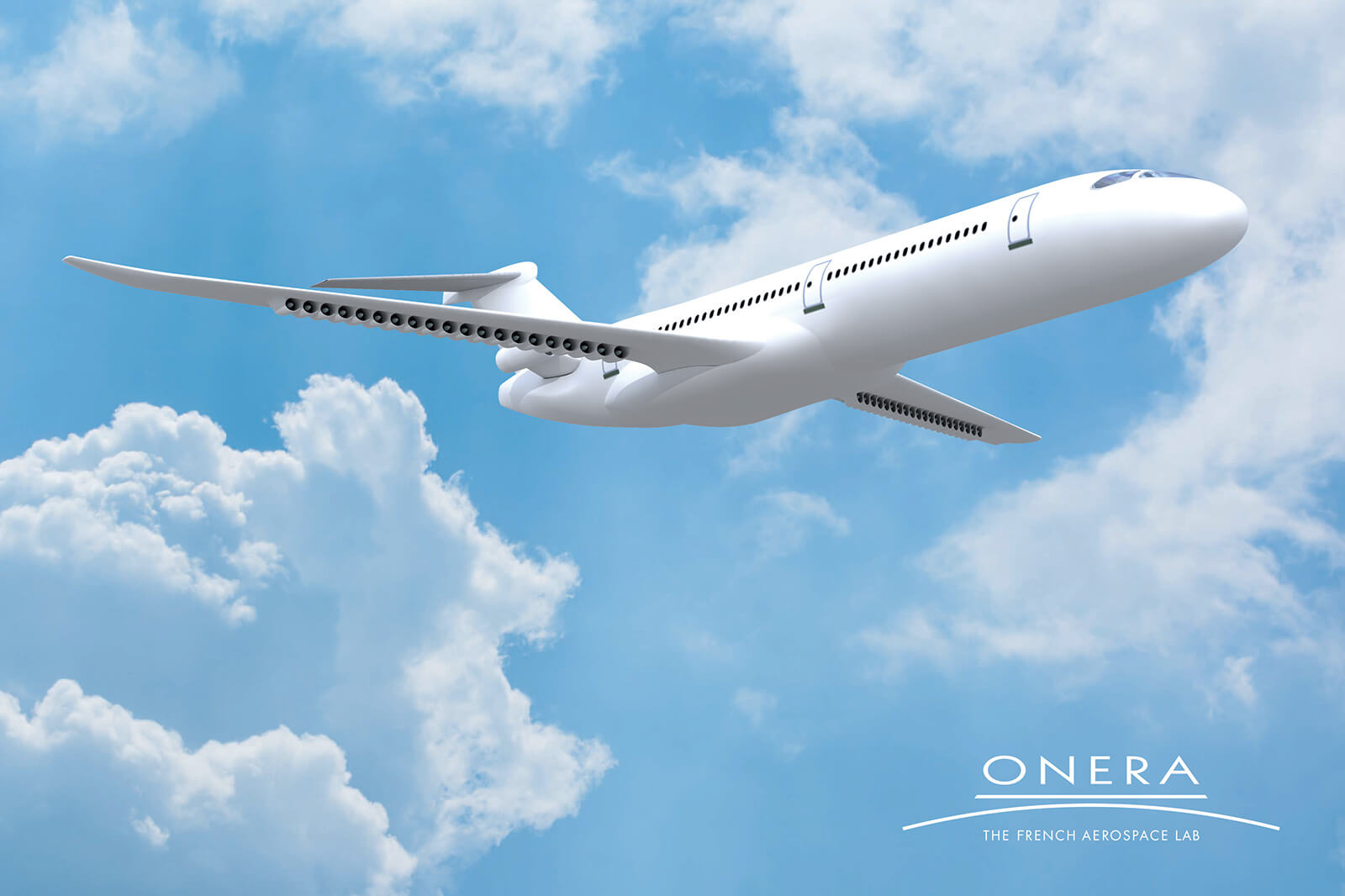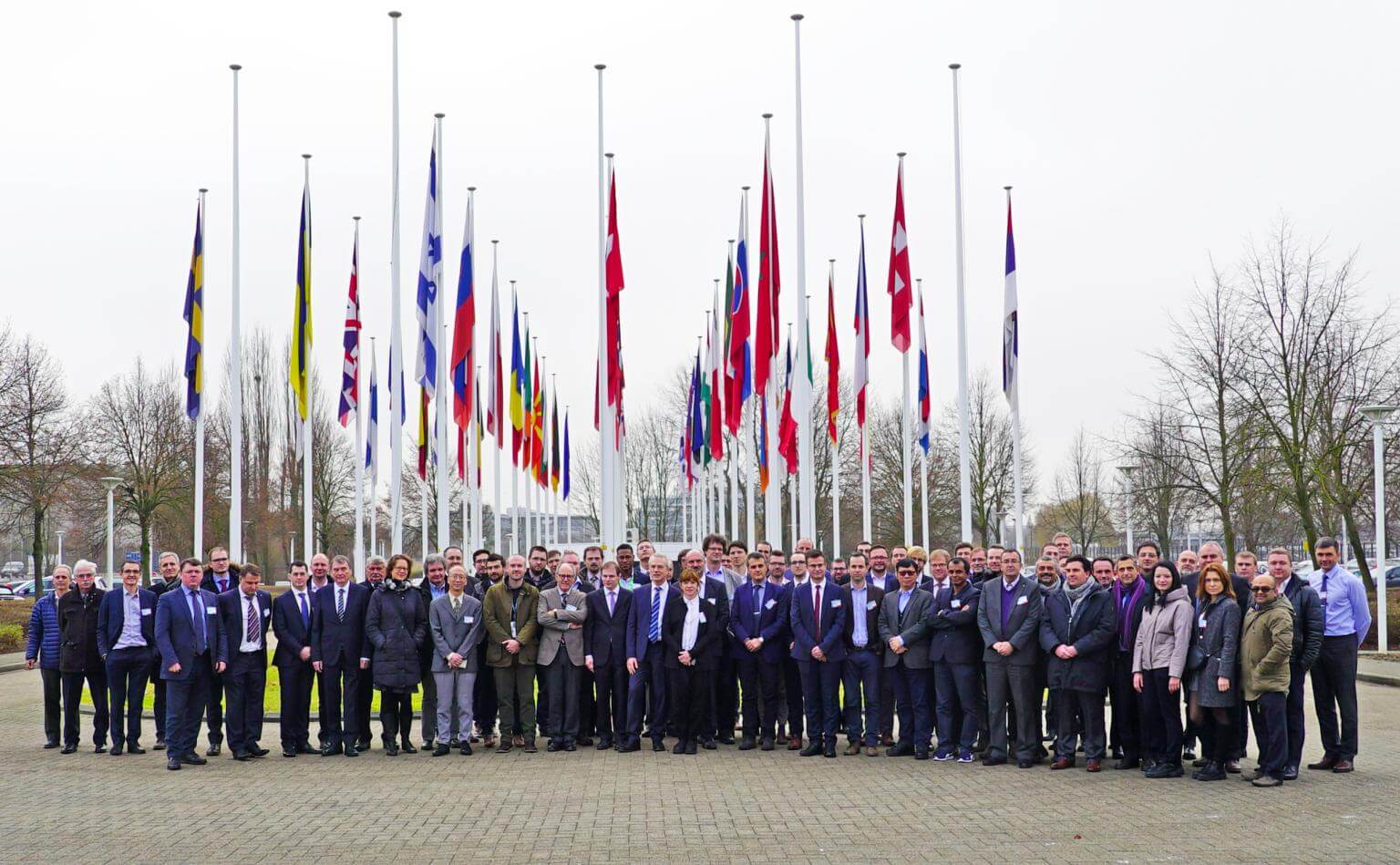Future
Electricity is in the air
The commitment to environmental impact reduction, which yet lasts since a decade, bolstered by the European Green Deal and exemplified in the latest project for cleaner and quieter flights.
Feb 2020
Aviation is a sector that thinks ahead, not just because of its products’ long-life cycle and the complexity of design and development, but also, and above all, because its existence directly affects society, the transportation of people and the air in the skies. Indeed, the issue of sustainability and the global dialogue on this subject in recent times has been central to the aviation sector for more than a decade, particularly in the context of Europe.
When she was first inaugurated, the President of the European Commission, Ursula von der Leyen, declared: "the European Green Deal is our new growth strategy... And by 2050, Europe should be the first climate-neutral continent in the world... none will be left behind”. The European aviation sector yet had immediately linked the substantiality of that declaration, and its targets, to one name: Horizon 2020.
The largest programme for research and innovation in Europe, with funding of around €80 billion over seven years, started in 2014 and has attracted other private investment, in addition to organizations (industrial and scientific) that have operationally responded to the calls. There are now plenty of opportunities for future growth and progress projects linked to each economic and social sector in Europe. The final goals of the calls, pursued through work programmes, affect the whole of society: new professions, zero pollution, renewable energies, quality food, and smarter transport.
It has been said, that for the aviation industry environmental impact has been a priority for a long time, 12 years to date. In February 2008, a forum in Brussels that brought together more than 500 stakeholders in the sector (including institutions, companies, universities and research centers) launched the Clean Sky Joint Technology Initiative. In the year that Horizon 2020 officially started, at the 2018 ILA Berlin Air Show, 14 industry leaders signed the letter of intent to continue the Clean Sky initiative within the large European programme, with the blessing of the Council of the European Union and a budget of €4 billion.
These figures are immense, for a sector with immense value and technological excellence. In Europe, the aeronautics industry is growing and today creates more than half a million jobs, adding up to more than 8 million in the global supply chain. 600 entities from 24 European countries are involved in aerospace research and development under the aegis of Clean Sky 2. They are all currently aiming to reduce greenhouse gases and noise emissions by up to 30%, and by 60% and upwards by 2050, when the aircraft being designed today will fly our skies.
The projects forming part of Clean Sky 2 aim to deliver innovative technologies and vary according to the commercial flying segment (short-, medium- or long-range aircraft, helicopters, aeronautical structures, airports, etc.). Avio Aero has been a Clean Sky partner since the beginning and participates in various working groups, alongside aircraft manufacturers and research institutes or through the university network, with its experience in propulsion for all types of aircraft and for helicopters.
There is yet more, however, because the results achieved by Avio Aero's New Technology Introduction (NTI) and Advanced Technology Operations (ATO) teams on certain Clean Sky 2 projects such as MAESTRO (for turboprop engines with the use of additive manufacturing) or, perhaps a more fitting example, IRON (for a regional 40-50 passengers aircraft with hybrid propulsion), have made it possible to attend directly the Horizon 2020 programme (always open to any organization capable of innovation and research). In this case, the projects slot into the very long list of the large European programme known as “Smart, Green and Integrated Transport Challenge”.
In January, Avio Aero officially engaged in the IMOTHEP (Investigation and Maturation of Technologies for Hybrid Electric Propulsion) project. Led by the French aerospace research Center ONERA and supported by a consortium of 33 large companies and academic and scientific institutions from the continent (Safran, MTU, ITP, GKN, CIRA, DLR, AIT, ILOT, Université de Lorraine, the Polytechnic University of Bari, the University of Nottingham and Bauhaus Luftfahrt, to name a few), the project has the ambitious goal of assessing the potential offered by hybrid electric propulsion and, ultimately, to build the corresponding aviation sector-wide roadmap for the maturation of the technology.
“It is important to have a good mix between research organizations and industry” says Philippe Novelli, Program Manager for Propulsion and Environment at ONERA and Coordinator of the project. “While industry brings its practical knowledge along with a view of the market and real systems specifications, research brings its modelling and detailed analysis capability, as well as a less constrained approach to innovation.”
Avio Aero engineering teams, namely ATO and NTI, turned their attention to the hybridization project a year ago and identified in Horizon 2020 a new opportunity - among the various opportunities examined by engineering each year - to expand the research and development work on hybrid-electric propulsion that started with IRON and then meet the 2035 environmental impact reduction targets.
Avio Aero took the responsibility for integrating a hybrid propulsion system capable of transforming thermal energy generated by a traditional engine into electrical energy
In a nutshell, through IMOTHEP, Avio Aero is responsible for integrating a hybrid propulsion system capable of transforming the thermal energy generated by a traditional engine into electrical energy that, in a more or less revolutionary configuration (i.e. twin-engine aircraft similar to current or even futuristic aircraft with diffused propulsion in certain points of aerodynamics), provides the aircraft with cleaner and quieter thrust.
In parallel, Avio Aero's engineers are also responsible for controlling and managing both electrical and thermal power generation, depending on the type of aircraft, for each flight phase as well as for each on-board energy requirement. All this while keeping a constant eye on the environmental requirements and leveraging the benefits of reduced consumption deriving from electricity generation.
IMOTHEP counts on over €10 million of funding granted by the European Commission and the project will see its completion by 2023. Only then will it be possible to say which technologies may actually be applied to aircraft with hybrid engines. “Hybridization is one of the options: the actual potential of the technology yet has to be unleashed as well as the best aircraft configurations have to be identified. The outcomes will support industry in making choice and issuing a technology development roadmap” adds Mr Novelli from ONERA.
The European Union will one day be able to invest in new hybrid-electric engine architectures ideal for futuristic shaped aircraft. At that point, regulation will affect the economic sustainability of flight hybridization and thus all market players (OEMs, aircraft manufacturers, airlines, and operators) will be able to usher in a new era. And that is another chapter in the story.







